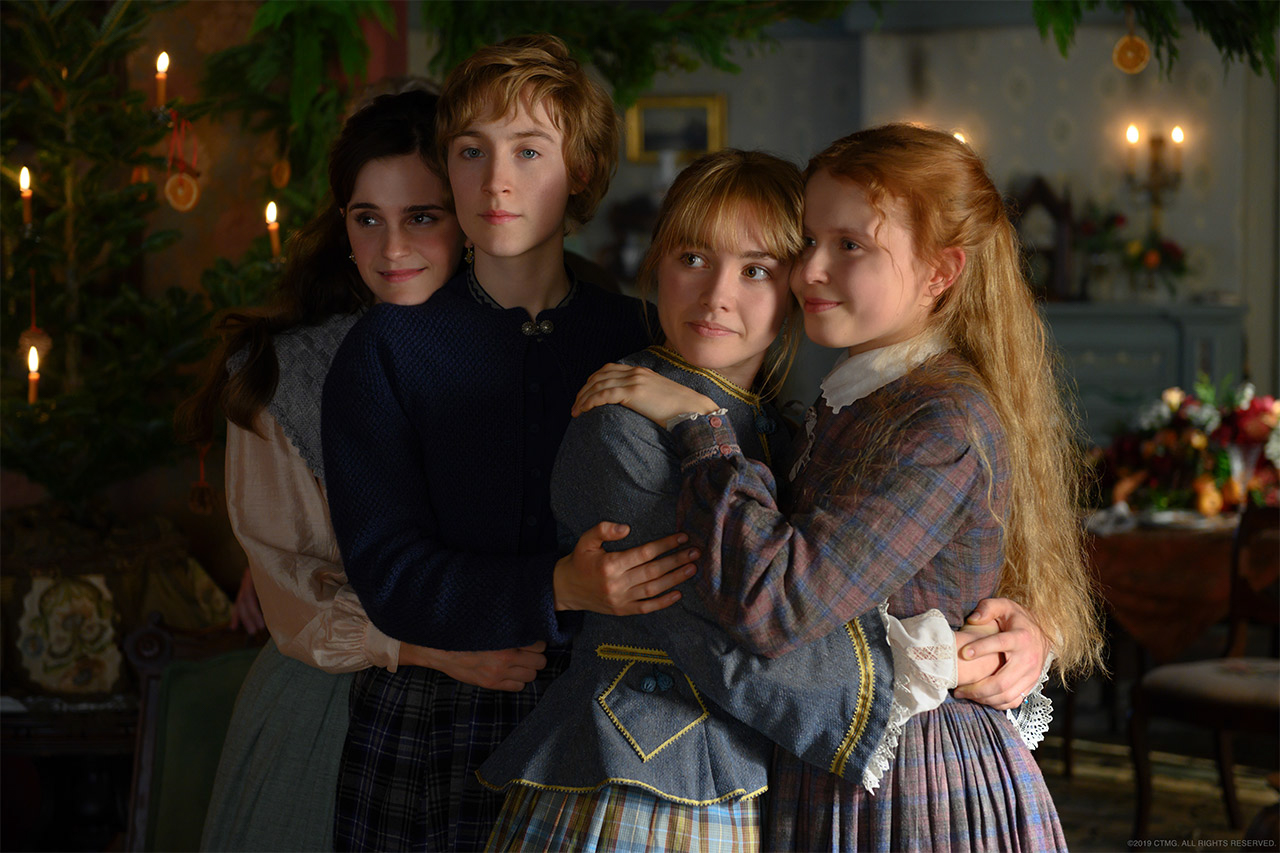‘Little Women’ Get Everything
Heroines of reimagined classic do not compromise
January 15, 2020

Meg (Emma Watson), Jo (Saoirse Ronan), Amy (Florence Pugh) and Beth (Eliza Scanlen) locked in an embrace on Christmas day.
Jo March (Saoirse Ronan) announces to her decrepit Aunt March (Meryl Streep) that she plans “to make her own way in the world.”
“Little Women,” a film based off of the book by Louisa May Alcott, with the screenplay written and the film directed by Greta Gerwig, is about the women of the March family. In order of age, there is Meg (Emma Watson), Jo, Beth (Eliza Scanlan) and Amy (Florence Pugh) — and the matriarch of the family — Marmee (Laura Dern).
This scene epitomizes that, while the “little women” in this film often are at odds with one another, their conflicts more often manifest in their lack of, or desire for, freedom, love and independence. Throughout the film, they battle to find a way to have all those things — something Gerwig argues they should not have to fight for in the first place.
“No one makes their own way, not really,” Aunt March says to Jo in response. “Least of all a woman. You’ll need to marry well.”
“But you’re not married, Aunt March,” Jo argues.
“Well that’s because I’m rich,” Aunt March says, talking over her.
Gerwig rearranges the original story, essentially following two timelines at the same time.
The film opens on the sisters’ adulthood, which lacks the warmth that the other timeline, childhood, has. The filter of the shots are colder and much greyer in comparison; sharper and realistic. In contrast, their childhood is shrouded in warmth and connection. It’s shot with a filter that has a “golden glow,” as Gerwig described in an interview with Vanity Fair. In describing an endearing scene when young Jo and Laurie unreservedly dance, Gerwig said “it has a very snow globe quality.”
The March family home, which plays a huge role in cultivating the beauty of the March sisters’ childhood, is filled with warmth. The sisters snipe and challenge one another in affectionate ways about their aspirations of wealth, love and fame. Social awareness, empathy, art and culture are just as much a part of the March women’s lives as each other are.
The audience gets wrapped into the charming childhood of the March sisters, and becomes as attached to it as Jo does.
One of the greatest examples of how Gerwig accomplishes this, and an example of Gerwig’s directing prowess, is of the scene when Laurie Laurence (Timothee Chalamet) is first introduced to the March family.
The first time Laurie enters the March home, it’s teeming with life and warmth. The sisters talk over one another with complete disregard for social grace in front of the stranger in their home. The camera moves from moment to moment, always missing a little of the disorder happening in another part of the room. By the end of the scene, Laurie is swept up by the emphatic chaos of the March home — and the audience gets swept into the story of the “Little Women.”
Gerwig’s rearranging of the original story makes it retrospective and reawakens an old story. But “Little Women” is much more than a magnificent retelling of a good story.
“Little Women” is one of few period pieces about a creative, independent woman that gives its heroine an ending where she keeps her independence, makes her own money and finds love. Gerwig gives her heroines an ending that is not limited to either independence or love or wealth, which is a refreshing change of pace.
Throughout the film, the March women, like the women of their time, are trapped. Gerwig asserts that her heroines reject the notion that they have to choose between wealth, independence and love.
In the end, the sisters get more, they get everything — the way Gerwig argues women should.
“I just feel like women, they have minds and they have souls as well as just hearts,” Jo says to Marmee, “And they’ve got ambition and they’ve got talent as well as just beauty and I’m so sick of people saying that love is all a woman is fit for. I’m so sick of it.”
Jo and Laurie dance on the patio of a house while a 19th century soiree roars on inside. They spin and flail and laugh with one another, completely devoid of decorum. Meg taps on the glass of a window and tells Jo she’s hurt her foot and that they have to go home. Laurie offers the sisters a ride home in his carriage, as Meg cannot walk home with her foot in the condition it is.
When Jo and Laurie carry the injured Meg home to March’s house, Amy, Beth and Marmee rush to Meg’s aid while Jo clears a path.Marmee grabs an ice bucket for Meg’s hurt foot with Amy and Beth tending to her other needs. Making eye contact with Laurie, Jo takes off her skirt and asks Theodore “Laurie” Laurence, “Can I call you Teddy?”

























































































